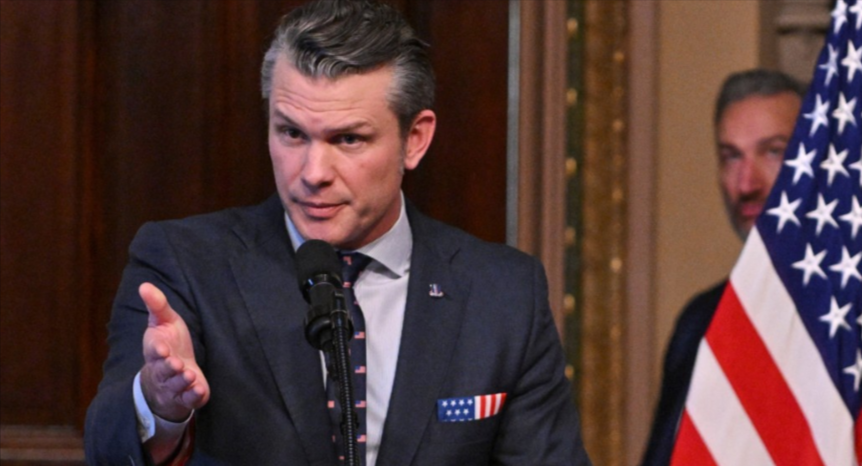Hegseth Refers To U.S. Military Bases By Previous ‘Non-Woke’ Names

Defense Secretary Pete Hegseth referenced two U.S. military bases by their former "non-woke" names during remarks on Monday, as he initiated the implementation of his commander-in-chief’s directives to remove "diversity, inclusion, and equity" (DEI) programs from the Pentagon, refocusing efforts on military readiness.
In 2021, the National Defense Authorization Act for Fiscal Year 2021 mandated an eight-member Naming Commission to propose "new names for nine military bases" and to determine "the disposition of all Confederacy-affiliated and named Department of Defense assets on those bases."
As a result, well-known bases like Fort Bragg were renamed Fort Liberty, and Fort Benning—home to the U.S. Army’s airborne school—was redesignated as Fort Moore. Both original names had been tied to Confederate generals.
During a press briefing at the Pentagon on Monday, Hegseth deliberately used the previous names.
“Every moment that I’m here, I’m thinking about the guys and gals in Guam, in Germany, in Fort Benning, in Fort Bragg,” Hegseth stated in a clip shared on the X platform.
His comments followed an announcement that President Donald Trump’s executive orders to eliminate DEI and "wokeness" from the military were being enforced immediately. “And today, there are more executive orders coming that we fully support,” he added.
.@PeteHegseth gives his first statement to the Pentagon press. pic.twitter.com/7oievd0fFp
— Kristina Wong 🇺🇸 (@kristina_wong) January 27, 2025
In addition to military reforms, Trump is challenging former President Joe Biden’s progressive "climate" policies by issuing a series of executive orders aimed at boosting domestic fossil fuel production.
These orders include a declaration of an "energy emergency," a move designed to shield the administration from some legal challenges that could hinder new drilling and energy development projects.
This policy shift represents one of the most significant transformations in U.S. energy strategy since the 1973 Arab oil embargo.
Upon taking office, President Biden had signed multiple executive orders, including rejoining the Paris Agreement—an international, nonbinding accord intended to cap global temperature increases at 1.5 degrees Celsius above pre-industrial levels.
Over the following years, his administration implemented numerous regulatory measures, such as new appliance efficiency standards, a pause on liquefied natural gas export permits, and Environmental Protection Agency (EPA) regulations targeting power plants.
Trump’s "energy emergency" initiative prioritizes mining critical minerals vital for national security, granting emergency approvals for energy resource development on public lands, and expediting the construction of energy infrastructure. A separate executive order outlines policies to expand energy production in Alaska.
Another directive revokes restrictions on offshore drilling, undoing one of Biden’s last major actions against fossil fuels. This order also rescinds several climate-related executive orders issued by Biden. Additionally, Trump formally withdrew the U.S. from the Paris Agreement.
Jeff Reynolds, senior editor for Restoration News, suggested that Trump’s firm rejection of Biden’s climate agenda reflects a more decisive approach. While Trump had previously recognized the importance of energy policy and regulatory support, Reynolds noted that he had been more measured in his first term.
However, after observing the extent of policy shifts under Biden, Trump appears determined to take more aggressive action.
“Now he knows where the bodies are buried, and he’s ready to take a meat axe to everything that got in his way the first time,” Reynolds told Just the News.
Trump’s wave of pro-fossil fuel executive orders underscores his commitment to fulfilling his "drill, baby drill" campaign promises.